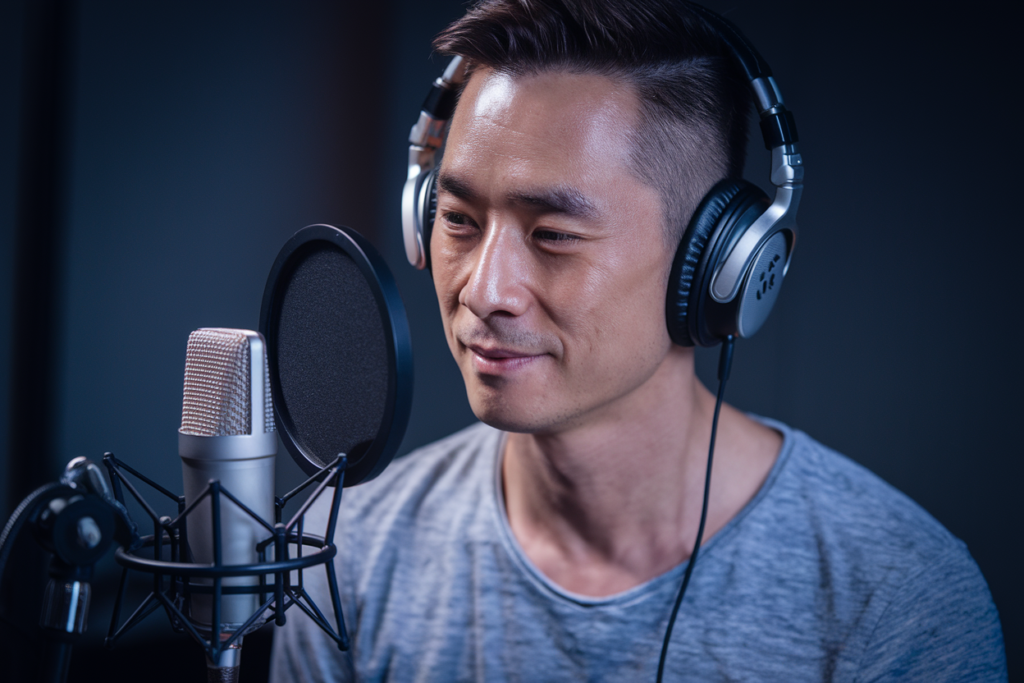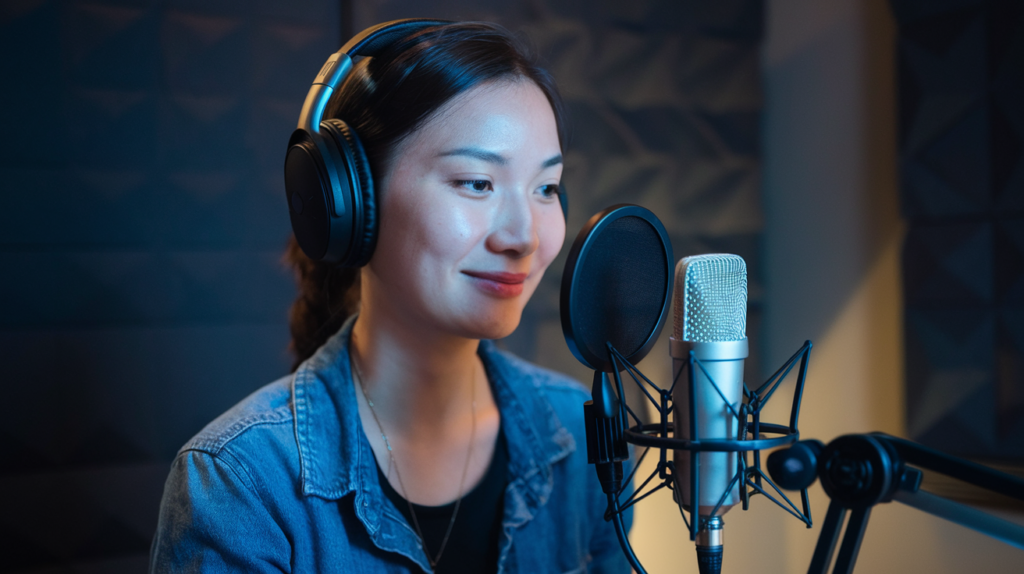Key Takeaways
- Voiceover Authenticity Defined: Authenticity in voiceovers involves selecting talent that genuinely represents the character’s cultural and emotional context, enhancing audience connection.
- Impact on Audience Engagement: Genuine voiceovers significantly increase viewer relatability and trust, bridging cultural gaps and fostering deeper connections with diverse audiences.
- Historical Evolution: Voiceover techniques in Chinese media have evolved from literal translations to more nuanced performances that reflect emotional depth and cultural relevance.
- Current Trends: The rise of localized voiceovers emphasizes hiring actors who embody regional accents and dialects, creating relatable storytelling experiences for audiences.
- Technological Advancements: Innovations in recording technology enhance voice quality and emotional delivery, allowing for greater authenticity in voice performances.
- Challenges to Overcome: Issues like casting misrepresentation and balancing artistic expression with authenticity pose challenges that require careful attention to maintain genuine connections with viewers.
Ever wondered why some voiceovers in Chinese media just hit differently? Voiceover authenticity plays a crucial role in how stories resonate with audiences. In a world where globalization is blurring cultural lines, the need for genuine representation has never been more important.
Understanding Voiceover Authenticity
Voiceover authenticity plays a crucial role in creating engaging media experiences. It ensures that the voice you hear resonates with the characters and narratives, allowing for a deeper connection with the audience.
Definition of Voiceover Authenticity
Voiceover authenticity refers to the genuine representation of characters through voiceovers. It involves selecting voice talent that aligns with cultural, emotional, and contextual aspects of the character or story. When a voice artist embodies these elements effectively, it enhances believability and relatability. For instance, using a native speaker’s accent can bring realism to a character’s portrayal, making the dialogue feel more natural.
Importance in Media
Authentic voiceovers significantly impact audience engagement. Viewers often relate better to content when they perceive it as credible and true to life. In an age where global audiences consume diverse media forms, having authentic voice actors helps bridge cultural gaps. This approach not only fosters understanding but also builds trust between creators and their audiences. Quality voice over talent captures nuances that resonate across different demographics, ensuring that messages are communicated clearly and effectively.
Prioritizing authenticity in your voiceovers elevates any project by enhancing emotional depth and fostering connections with viewers from various backgrounds.
Historical Context of Voiceover in Chinese Media
Voiceovers play a significant role in shaping the landscape of Chinese media. Understanding their historical context reveals how techniques and cultural influences have evolved over time.
Evolution of Voiceover Techniques
Voiceover techniques in China underwent substantial changes, particularly in the 20th century. Early adaptations primarily featured literal translations, often lacking emotional depth and authenticity. As globalization increased, so did the demand for more relatable content.
The introduction of advanced recording technologies enabled voice artists to bring characters to life with greater nuance. Modern voice actors focus on delivering performances that resonate emotionally with audiences, ensuring that their voices match not only the character’s persona but also the narrative’s cultural context.
Cultural Influences on Voiceover
Cultural nuances significantly impact voiceovers in Chinese media. Traditionally, local dialects and regional accents played essential roles in storytelling, reflecting diverse backgrounds within China itself. This practice continues today as voice talent incorporates these elements to enhance authenticity.
Furthermore, exposure to international films has influenced local productions. Many contemporary projects blend Western styles with traditional Chinese storytelling methods. This fusion demands skilled voice actors who can navigate both worlds effectively while maintaining credibility through their performance.
Understanding these aspects of voiceover history helps you appreciate its evolving nature and recognize the importance of selecting the right voice talent for your projects. Authenticity elevates content quality, making it vital for engaging today’s diverse audience.
Current Trends in Voiceover Authenticity
Voiceover authenticity is evolving rapidly in Chinese media, reflecting cultural shifts and audience expectations. You’ll notice a significant push toward genuine representation that resonates with viewers on multiple levels.
Rise of Localized Voiceovers
Localized voiceovers are gaining traction as productions aim to connect more deeply with their audiences. This trend focuses on hiring voice actors who not only speak the language but also embody the cultural nuances of the characters they portray. By utilizing local dialects and regional accents, creators enhance the storytelling experience, making it relatable and authentic. For instance, when a character from southern China speaks in a local accent, it adds an extra layer of realism that audiences appreciate. The rise of localized voiceovers fosters a sense of familiarity and belonging for viewers, which can elevate engagement significantly.
Impact of Technology on Voiceover Quality
Technology has transformed the landscape of voiceovers dramatically. Advanced recording techniques allow voice artists to deliver high-quality performances that capture emotions more effectively than ever before. With tools like AI-assisted editing and sound engineering software, producers can refine audio to ensure clarity and impact. These innovations enable voice over talent to explore various styles and tones while maintaining authenticity in their delivery. As technology continues to evolve, expect even greater enhancements in how stories are told through voiceovers—creating immersive experiences that resonate with diverse audiences across China and beyond.
By staying attuned to these trends in voiceover authenticity, you can make informed decisions when selecting talent for projects that demand genuine connections with viewers.
Challenges Facing Voiceover Authenticity
Voiceover authenticity in Chinese media faces several significant challenges that can impact audience engagement and overall project success.
Issues with Casting and Representation
Casting choices directly affect the authenticity of voiceovers. When selecting voice actors, it’s essential to consider not just vocal talent but also cultural representation. Misalignment between a character’s background and the voice actor’s experience can lead to a disconnect for the audience. For instance, hiring a voice artist who lacks familiarity with local dialects or cultural nuances may result in performances that feel flat or unrelatable. This misrepresentation not only diminishes the story’s authenticity but also risks alienating viewers who seek genuine connections with characters.
Balancing Artistic Expression and Authenticity
Maintaining a balance between artistic expression and authenticity poses another challenge. While creative freedom allows voice actors to bring unique interpretations to their roles, it can sometimes overshadow the essence of what makes a character relatable. Striking this balance requires careful direction and an understanding of how artistic choices align with cultural truths. When you emphasize authentic storytelling alongside creative input, you enhance emotional depth without sacrificing connection to the source material. Ultimately, achieving this harmony fosters an engaging experience for audiences while honoring their diverse backgrounds.
By addressing these challenges head-on, creators can elevate their projects through more authentic voiceovers that resonate deeply with viewers across different cultures.
Conclusion
Voiceover authenticity is vital for creating compelling connections in Chinese media. As you navigate this evolving landscape, recognizing the importance of genuine representation can significantly enhance audience engagement. By prioritizing culturally relevant and emotionally resonant voiceovers, you can foster trust and relatability among viewers.
Embracing local dialects and regional accents allows for a richer storytelling experience that resonates with diverse audiences. As technology continues to advance, leveraging these tools while remaining true to authentic expression will elevate your projects. Ultimately, focusing on voiceover authenticity not only bridges cultural gaps but also enriches narratives that captivate and inspire viewers from all walks of life.
Frequently Asked Questions
What is voiceover authenticity in Chinese media?
Voiceover authenticity refers to the genuine representation of characters through voiceovers in Chinese media. It ensures that the voices align with the cultural, emotional, and contextual aspects of the story, making it relatable and believable for audiences.
Why is voiceover authenticity important for audience engagement?
Authentic voiceovers foster a deeper connection between viewers and characters. They enhance believability and relatability, which builds trust and creates more engaging media experiences that resonate with diverse audiences.
How has voiceover technology evolved in Chinese media?
Advancements in recording technologies have improved the quality of voiceovers, allowing artists to deliver nuanced performances. Tools like AI-assisted editing now enable more effective emotional expression while maintaining cultural authenticity.
What challenges does voiceover authenticity face today?
Challenges include issues with casting and representation; misalignment between a character’s background and an actor’s experience can create disconnects. Balancing artistic expression with authenticity also poses difficulties for creators aiming for genuine portrayals.
How do local dialects affect storytelling in Chinese media?
Local dialects add depth to storytelling by enhancing relatability and connecting characters more closely to their cultural roots. This approach helps engage audiences who identify with specific regional accents or linguistic nuances.







